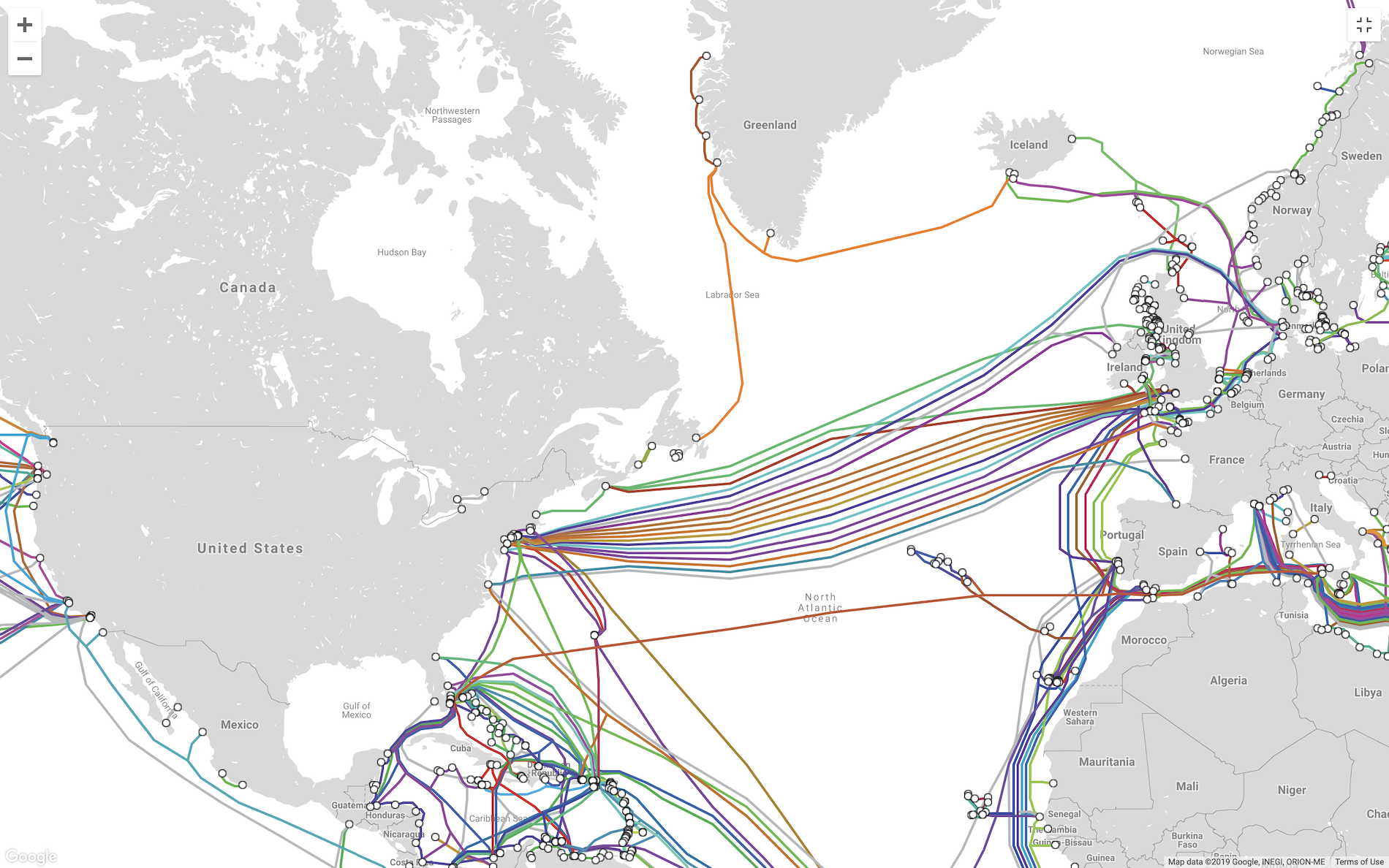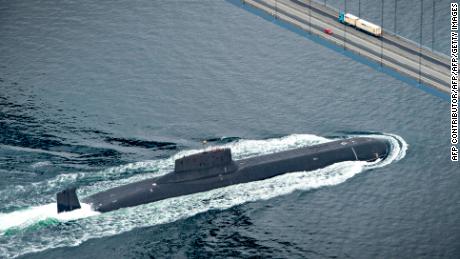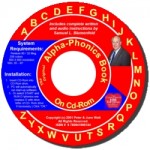the global internet is powered by vast undersea cables. But they’re vulnerable.
(Not all electronics communications are carried by satellites!)
Just over two weeks later, the UK’s Queen Victoria sent a congratulatory message to then US President James Buchanan, which was followed by a parade through the streets of New York, featuring a replica of a ship which helped lay the cable and fireworks over City Hall.
In their inaugural cables, Queen Victoria hailed the “great international work” by the two countries, the culmination of almost two decades of effort, while Buchanan lauded a “triumph more glorious, because far more useful to mankind, than was ever won by conqueror on the field of battle.
The message took over 17 hours to deliver, at 2 minutes and 5 seconds per letter by Morse code, and the cable operated for less than a month due to a variety of technical failures, but a global communications revolution had begun.
By 1866, new cables were transmitting 6 to 8 words a minute, which would rise to more than 40 words before the end of the century. In 1956, Transatlantic No. 1 (TAT-1), the first underwater telephone cable, was laid, and by 1988, TAT-8 was transmitting 280 megabytes per second — about 15 times the speed of an average US household internet connection — over fiber optics, which use light to transmit data at breakneck speeds.
In 2018, theMarea cablebegan operating between Bilbao, Spain, and the US state of Virginia, with transmission speeds of up to 160 terabits per second — 16 million times faster than the average home internet connection.
Today, there are around 380 underwater cables in operation around the world, spanning a length of over 1.2 million kilometers (745,645 miles).
Underwater cables are the invisible force driving the modern internet, with many in recent years beingfundedby internet giants such as Facebook, Google, Microsoft and Amazon. They carryalmost allour communications and yet — in a world of wireless networking and smartphones — we are barely aware that they exist.
Yet as the internet has become more mobile and wireless, the amount of data traveling across undersea cables has increased exponentially.
“Most people are absolutely amazed” by the degree to which the internet is still cable-based, said Byron Clatterbuck,  chief executive of Seacom, a multinational telecommunications firm responsible for laying many of the undersea cables connecting Africa to the rest of the world.
chief executive of Seacom, a multinational telecommunications firm responsible for laying many of the undersea cables connecting Africa to the rest of the world.
 chief executive of Seacom, a multinational telecommunications firm responsible for laying many of the undersea cables connecting Africa to the rest of the world.
chief executive of Seacom, a multinational telecommunications firm responsible for laying many of the undersea cables connecting Africa to the rest of the world.“People are so mobile and always looking for Wi-Fi,” he said. “They don’t think about it, they don’t understand the workings of this massive mesh of cables working together.
“They only notice when it’s cut.”
Network down
In 2012,Hurricane Sandyslammed into the US East Coast, causing an estimated $71 billion in damage and knocking out several key exchanges where undersea cables linked North America and Europe.
“It was a major disruption,” Frank Rey, director of global network strategy for Microsoft’s Cloud Infrastructure and Operations division, said in a statement.
“The entire network between North America and Europe was isolated for a number of hours. For us, the storm brought to light a potential challenge in the consolidation of transatlantic cables that all landed in New York and New Jersey.”
For its newest cable, Marea, Microsoft chose to base its US operation further down the coast in Virginia, away from the cluster of cables to minimize disruption should another massive storm hit New York.
But most often when a cable goes down nature is not to blame. There are about 200 such failures each year and the vast majority are caused by humans.
“Two-thirds of cable failures are caused by accidental human activities, fishing nets and trawling and also ships’ anchors,” said Tim Stronge, vice-president of research atTeleGeography, a telecoms market research firm. “The next  largest category is natural disaster, mother nature — sometimes earthquakes but also underwater landslides.”
largest category is natural disaster, mother nature — sometimes earthquakes but also underwater landslides.”
 largest category is natural disaster, mother nature — sometimes earthquakes but also underwater landslides.”
largest category is natural disaster, mother nature — sometimes earthquakes but also underwater landslides.”A magnitude-7.0 earthquake off the southwest coast off Taiwanin 2006, along with aftershocks, cut eight submarine cables which caused internet outages and disruption in Taiwan, Hong Kong, China, Japan, Korea and the Philippines.
Stronge said the reason most people are not aware of these failures is because the whole industry is designed with it in mind. Companies that rely heavily on undersea cables spread their data across multiple routes, so that if one goes down, customers are not cut off.
How a cable gets laid
Laying a cable is a years-long process which costs millions of dollars, said Seacom’s Clatterbuck.
The process begins by looking at naval charts to plot the best route. Cables are safest in deep water where they can rest on a relatively flat seabed, and won’t rub against rocks or be at risk of other disturbances.
“The deeper the better,” Clatterbuck said. “When you can lay the cable down in deep water you rarely have any problems. It goes down on the bottom of the seabed and just stays there.”
Things become more difficult the closer you get to shore. A cable that is only a few centimeters thick on the bottom of the ocean must be armored from its environment as reaches the landing station that links it with the country’s internet backbone.
“Imagine a long garden hose, inside of which are very small tubes that house a very, very thin fiber pair,” Clatterbuck said. That hose is wrapped in copper, which conducts the direct current that powers the cable and its repeaters, sometimes up to 10,000 volts.
“The fibers are wrapped in urethane and wrapped in copper and wrapped again in urethane,” he said. “If we’re going to have to put that cable on a shoreline that is very shallow and has a lot of rocks, you’re now going to have to armor coat that cable so no one can hack through it.”
Cables in less hospitable areas can be far thicker than garden hoses, wrapped in extra plastic, kevlar armor plating, and stainless steel to ensure they can’t be broken.
Depending on the coast, cable companies might also have to build concrete trenches far out to sea, to tuck the cable in to protect it from being bashed against rocks.
“Before the cable-laying vessels go out they send out another specialized ship that maps the sea floor in the area when they want to go,” said TeleGeography’s Stronge. “They want to avoid areas where there’s a lot of undersea currents,  certainly want to avoid volcanic areas, and avoid a lot of elevation change on the sea floor.”
certainly want to avoid volcanic areas, and avoid a lot of elevation change on the sea floor.”
 certainly want to avoid volcanic areas, and avoid a lot of elevation change on the sea floor.”
certainly want to avoid volcanic areas, and avoid a lot of elevation change on the sea floor.”Once the route is plotted and checked, and the shore connections are secure, huge cable laying ships begin passing out the equipment.
“Imagine spools of spools of garden hose along with a lot of these repeaters the size of an old travel trunk,” Clatterbuck said. “Sometimes it can take a month to load the cable onto a ship.”
The 6,600 kilometer (4,000 mile) Marea cable weighs over 4.6 million kilograms (10.2 million pounds), or the equivalent of 34 blue whales, according to Microsoft, which co-funded the project with Facebook.
It took more than two years to lay the entire thing.
Malicious cuts
The blackout came without warning. In February 2008, a whole swath of North Africa and the Persian Gulf suddenly went offline, or saw internet speeds slow to a painful crawl.
This disruption was eventually traced todamage to three undersea cablesoff the Egyptian coast. At least one — linking Dubai and Oman — was severed by an abandoned, 5,400 kilogram (6-ton) anchor, the cable’s ownersaid.
But the cause of the other damage was never explained, with suggestions it could have been the work ofsaboteurs. That raises the issue of another threat to undersea cables: deliberate human attacks.
In a 2017paperfor the right-wing think tank Policy Exchange, British lawmaker Rishi Sunak wrote that “security remains a challenge” for undersea cables.
“Funneled through exposed choke points (often with minimal protection) and their isolated deep-sea locations entirely public, the arteries upon which the Internet and our modern world depends have been left highly vulnerable,” he said. “The threat of these vulnerabilities being exploited is growing. A successful attack would deal a crippling blow to Britain’s security and prosperity.”
However, with more than 50 cablesconnected to the UK alone, Clatterbuck was skeptical about how useful a deliberate outage could be in a time of war, pointing to the level of coordination and resources required to cut multiple cables at once.
“If you wanted to sabotage the global internet or cut off a particular place you’d have to do it simultaneously on multiple cables,” he said. “You’d be focusing on the hardest aspect of disrupting a network.”
It would likely be easier to target onshore internet infrastructure with cyber and DDoS attacks, flooding the network and knocking key facilities offline. Though even then, Clatterbuck pointed out, military and other government organizations likely have satellite backups.
Submarine spying
Tapping underwater cables is not a new thing.During the Cold War, US submarines transported divers with specially designed equipment that they attached to Soviet cables in the Sea of Okhotsk to intercept all communications.
The secret surveillance lasted almost a decade, until information about the operation,codenamed Ivy Bells, wassold to the Sovietsby a former National Security Agency communications specialist, Ronald Pelton.
Today, more than 99% of international communications are carried over fiber optic cables, most of them undersea, according to TeleGeography. While tapping undersea phone cables was no easy feat, surveilling modern fiber optic cables is even harder, but not impossible.
According to researchers with AT&T Labs, by carefully targeting parts of internet infrastructure, attackers could knock out parts of a network that they can’t surveil and force people onto cables they already control, potentially without the target even realizing that their communications are being exposed.
target even realizing that their communications are being exposed.
 target even realizing that their communications are being exposed.
target even realizing that their communications are being exposed.The easiest way of doing so is not by tapping the cable, but the point where it connects to land. This what UK and US spy agencies have been accused of doing in the past, allegedly with the cooperation of the private companies operating the cables.
In 2013,the Guardian reported— citing documents provided by National Security Agency (NSA) whistleblower Edward Snowden — that British spy agency GCHQ had “secretly gained access to the network of cables which carry the world’s phone calls and internet traffic.”
According to documents provided by Snowden, in 2012 GCHQ was handling 600 million “telephone events” every day and had compromised more than 200 fiber optic cables.
The NSA allegedly ran a similar operation called Upstream, which apresentation leaked by Snowdendescribed as being able to access “communications on fiber cables and infrastructure as data flows past.”
GCHQ declined to comment for this article. In a statement, an NSA spokesman said the agency “can neither confirm nor deny mission related activities.”
“What we can say is that NSA conducts its foreign signals intelligence mission in a carefully controlled manner, in strict accordance with US laws and subject to multiple layers of oversight, focusing on important foreign intelligence and national security priorities,” the spokesman added. “In particular, privacy and civil liberties are integral concerns in the planning and execution of NSA’s mission.”
Attaching a probe or surveillance device to a cable somewhere along its length without disrupting the fiber optic traffic or alerting the cable’s owners would be far more difficult.
“You would need specialized equipment with a grapnel that can lower down to the cable and grab it and pull it up without damaging the rest of the cable,” Stronge said. Then the cable would have to be cut and reconnected in a way that doesn’t disrupt the light passing over the fiber optics. You’d also have to hope the operator didn’t notice that something was afoot while this process was underway.
“That’s difficult, it takes a lot of specialized equipment to do that,” he said, not to mention the “pretty good chance of electrocution” in dealing with a copper cable transmitting 10,000 volts.
Countries have been rumored to be attempting to spy on undersea cables.According to multiple reports, never confirmed by the US military, the USS Jimmy Carter submarine possesses advanced underwater cable tapping abilities, including afloodable chamberinside the sub so divers and technicians can have easy access to the cable.
And Washington isn’t the only power believed to be carrying out such activity. In 2015, US intelligence officials said underwater sensors hadspotted Russian submarines near key communications cables, along with a spy ship believed to carry small underwater vehicles designed to sever or damage cables.
China is also ramping up the size ofits submarine fleet, as part of a wider expansion of its military under President Xi Jinping.
In a 2016reportby the hawkish foreign policy think tank Center for Strategic and International Studies, the authors wrote that “is likely that Russian auxiliary vessels, including tele-operated or autonomous undersea craft, are equipped to be able to manipulate objects on the seafloor and may also carry sensitive communications intercept equipment in order to tap undersea cables or otherwise destroy or exploit seafloor infrastructure.”
They added that “this capability could enable collection of sensitive traffic carried on transatlantic cables and/or cyber attacks against secure computer systems, among other things.”
The Publishers of ALPHA-PHONICS and the ALPHA-PHONICS BLOG present this article to it Followers because they believe it is quite important, since many people might not know that so much of our communications are carried by undersea cables.
We also would like to suggest you look at ALPHA-PHONICS if you are considering teaching your own child to read. It has been successfully used by Parents for over 33 years to create excellent readers easily because it it so simple for both Parent and Student.
2:30 VIDEO FROM A FATHER WHO TAUGHT HIS YOUNG SON TO READ WITH ALPHA-PHONICS









 Alpha-Phonics
Alpha-Phonics The Alphabet Song!
The Alphabet Song! Water on the Floor
Water on the Floor Alpha-Phonics the Book on CD Rom
Alpha-Phonics the Book on CD Rom Blumenfeld Oral Reading Assessment Test
Blumenfeld Oral Reading Assessment Test How To Tutor
How To Tutor How To Tutor Cursive Handwriting Workbook
How To Tutor Cursive Handwriting Workbook